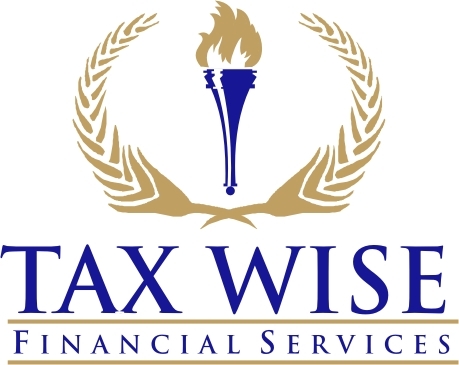
Introduction
For many small business owners, finding ways to reduce taxes is a top priority. Running a business comes with many costs, and taxes can take a large portion of profits. That’s why planning ahead with smart financial tools can make a big difference. One powerful option is using a Traditional IRA to offset business income with tax saving investments.
This article will explain what a Traditional IRA is, how it can help lower taxable income, and how combining it with other tax-saving strategies can maximize savings in 2025. The information here is written in simple language so that anyone, even without a background in finance, can understand how these tools work.
What Is a Traditional IRA?
A Traditional IRA (Individual Retirement Account) is a type of retirement savings account. It allows people to save money for the future while also lowering their taxes today. When you put money into a Traditional IRA, those contributions are often tax-deductible. That means you can reduce the amount of income the government uses to calculate your taxes.
For example, if a small business owner earns $70,000 in a year and puts $6,000 into a Traditional IRA, the government may only tax them as if they earned $64,000. This lowers their taxable income and their tax bill at the same time. Later, when they retire, they will pay taxes on the money they withdraw.
This “tax now or tax later” system is what makes the Traditional IRA a useful tool for reducing taxable income today while planning for tomorrow.
Why Business Owners Should Care
Unlike employees who often get access to workplace retirement plans, small business owners must create their own strategies. This is where using a Traditional IRA to offset business income with tax saving investments becomes especially valuable. By putting money into a Traditional IRA, business owners can directly lower their taxable income each year.
This can be even more powerful when combined with other deductions, such as home office expenses, business equipment, or healthcare costs. Every deduction lowers the amount of income the government taxes, and the IRA adds another layer of savings.
Can Small Business Owners Maximize Tax Savings by Combining a Traditional IRA with Tax Saving Investments?
The short answer is yes. Small business owners can maximize tax savings by pairing a Traditional IRA with other tax-saving investments and strategies. Let’s look at how this works in practice.
1. Lowering Taxable Income
Every dollar contributed to a Traditional IRA reduces taxable income. That means less money owed to the government and more kept in the business owner’s pocket.
2. Investing for Growth
The money inside the Traditional IRA grows tax-deferred. That means business owners don’t pay taxes on the growth each year. Instead, the account grows faster over time, and taxes are only paid when the money is withdrawn in retirement.
3. Pairing With Other Investments
Business owners can also use other tax-saving investments such as Health Savings Accounts (HSAs), SEP IRAs, or even energy-efficient equipment for their business. Each of these adds another layer of savings. When combined, the benefits can multiply, creating significant tax reductions.
A Real-World Example
Let’s imagine Sarah, a bakery owner. Sarah earns $80,000 in profit this year. Without any tax planning, she might owe taxes on all of that income.
But instead, Sarah decides to put $6,500 into a Traditional IRA. This reduces her taxable income to $73,500. Then, she also invests in new energy-efficient ovens for her bakery, which qualifies for a business tax credit. Together, these moves save her thousands in taxes while also preparing her for retirement.
This is a simple picture of how using a Traditional IRA to offset business income with tax-saving investments works in real life. It’s not just about retirement; it’s about smart business planning today.
Common Questions About Traditional IRAs and Business Taxes
How much can I contribute to a Traditional IRA?
In 2025, the contribution limit for most people is expected to remain around $6,500 per year (or higher if you are 50 or older). However, business owners may also explore other retirement accounts like SEP IRAs or SIMPLE IRAs, which allow higher contributions.
Do I qualify for tax deductions?
Most small business owners qualify for tax deductions on Traditional IRA contributions, but there are income limits if you or your spouse have another retirement plan. It’s important to check the IRS rules or talk with a tax advisor.
What about Roth IRAs?
Roth IRAs work differently. With a Roth, you pay taxes now, but withdrawals in retirement are tax-free. A Traditional IRA focuses on reducing today’s taxable income, which is why it’s better for offsetting current business profits.
Benefits of Combining Strategies
By combining a Traditional IRA with other tax-saving investments, business owners can achieve three big benefits:
- Immediate Savings – Lower taxable income today.
- Future Growth – Tax-deferred growth inside the IRA.
- Business Strength – Extra money saved can be reinvested into the business.
This triple benefit makes using a Traditional IRA to offset business income with tax saving investments one of the smartest moves for small business owners in 2025.
Key Mistakes to Avoid
While these tools are powerful, there are some mistakes to watch out for:
- Not contributing enough: If you don’t put money into the IRA, you miss out on the tax deduction.
- Ignoring deadlines: Contributions must be made before the tax filing deadline, usually April 15 of the following year.
- Not planning for retirement taxes: Remember, Traditional IRA withdrawals are taxed later. Planning for those future taxes is important.
Practical Tips for 2025
- Plan early: Don’t wait until tax season. Start contributing throughout the year.
- Work with a tax professional: They can help you combine the IRA with other tax-saving investments.
- Keep good records: Track all contributions and business expenses to maximize deductions.
Conclusion
For small business owners, taxes don’t have to be overwhelming. By learning how to use a Traditional IRA and pairing it with other smart financial choices, it’s possible to save money today and build wealth for tomorrow.
In simple terms, using a Traditional IRA to offset business income with tax saving investments is like giving yourself a pay raise. You get to keep more of what you earn, invest in your future, and strengthen your business at the same time.
As 2025 unfolds, now is the perfect time for business owners to explore these strategies and take charge of both their taxes and their financial future.


